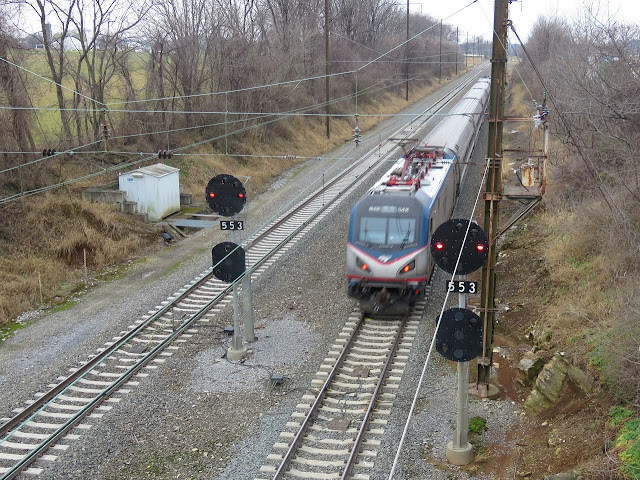Visiting The Wave is much like trying to get tickets to a live taping of SNL. You don't get to pick when you go, are assigned a date and you take it or leave it. Getting a date in the January off season was more statistically likely than the in-season, but we dodged one major bullet in the form of Super Bowl 57, sponsored by Levi's. If our date had been just one or two weeks later, travel costs into Phoenix would have skyrocketed.
For anyone looking for a place to retire, Arizona features Gila Woodpeckers, saguaro cacti and hot air balloons.
In Flagstaff the former ATSF Main Line and current Amtrak station are right in the center of town. Choosing to eat at Lumberyard Brewing allows one sufficient time to get photos of passing BNSF traffic upon activation of the San Francisco St crossing signals. The first train of that day was a westbound doublestack intermodal led by BNSF ET44AC #3788, C44-10W #7607, Ferromex SD70ACe #4052 and ES44AC4 #8082. The Amtrak station sees the passage of the daily Southwest Chief in the early morning and evening so during the day it was all freight, all the time.
I was a little late to the party for the next two trains. The first, an eastbound autorack and manifest train, was led by ET44C4 #3994, C44-9W #5234 and ES44C4 #7038. This was followed by an eastbound intermodal with ES44C4 #4246, C44-10W #7611, ES44C4 #6901 and ES44C4 #8323.
This was followed by a westbound oil train with ES44C4 #8090, ES44C4 #6625 and C44-9W #5483 leading and two ES44C4's, #6905 and #6951, on the rear as DPUs.
A second westbound of the intermodal variety soon followed with ES44C4 #4298, C44-9W #4304 and C44-9W #4465 leading.
Heading out of town I caught C44-9W #5191 hanging out as local power on a siding.














































